This is the 2nd blog in the Upgrade to AOS 10 series. Go here for Part 1.
If you’re currently using HPE Aruba Networking Central and are ready to upgrade to ArubaOS 10 (AOS 10), get started with these instructions from the Aruba Central Help Center. Otherwise, read on for my experience!
I currently run a few different sites, with one of them using a 9004 gateway (8.7.0.0-2.3.0.9). Before proceeding with the upgrade, I made sure to check the Supported Devices list so that I could confirm which of my existing infrastructure is supported by AOS 10. The firmware compliance tab will also detail what software versions are available.
Note: Your connected APs do not need to be running AOS 10 when you upgrade your gateway; however, it is recommended to upgrade them to take advantage of the latest features. For details on how to upgrade your APs to AOS 10, refer to my previous blog post here!
On to the Upgrade!
Right when I logged on to Central, I navigated to the “Gateways” tab, and then clicked on the “Firmware” tab on the specific group-level view. Here, you have a choice to upgrade a single gateway or manage compliance for the entire group. Note, using this process, multiple software versions can coexist in the same group. To manage gateways in a specific cluster, select the appropriate cluster view. I proceeded with the upgrade for all gateways by clicking on the “Set Compliance” button. This pulls up a window where I can toggle the compliance button off or on, and then select a firmware version from the dropdown below. In this case, I chose the 10.4.0.1 firmware version and made sure to select “Automatically reboot to complete the upgrade”.
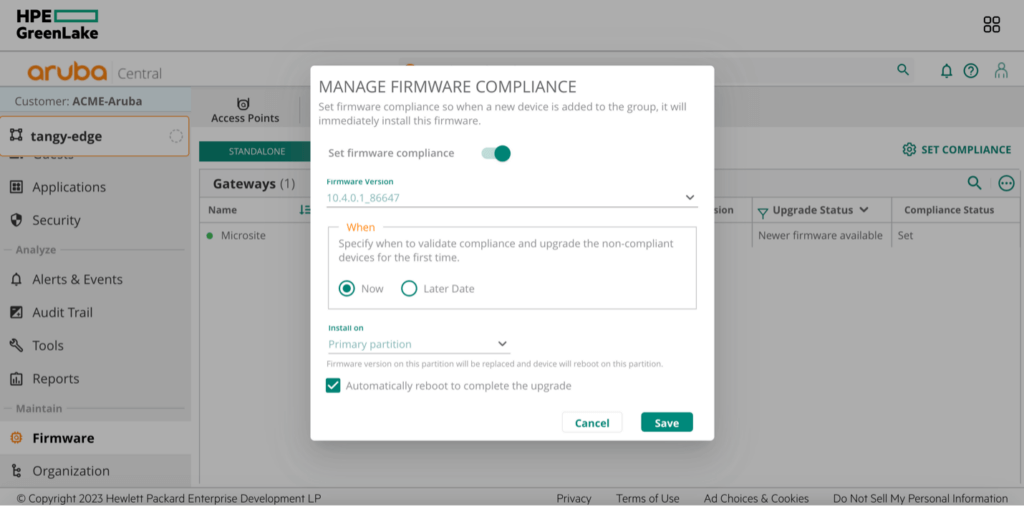
Once I clicked “Save”, my compliance status was confirmed, and I clicked “ok”.
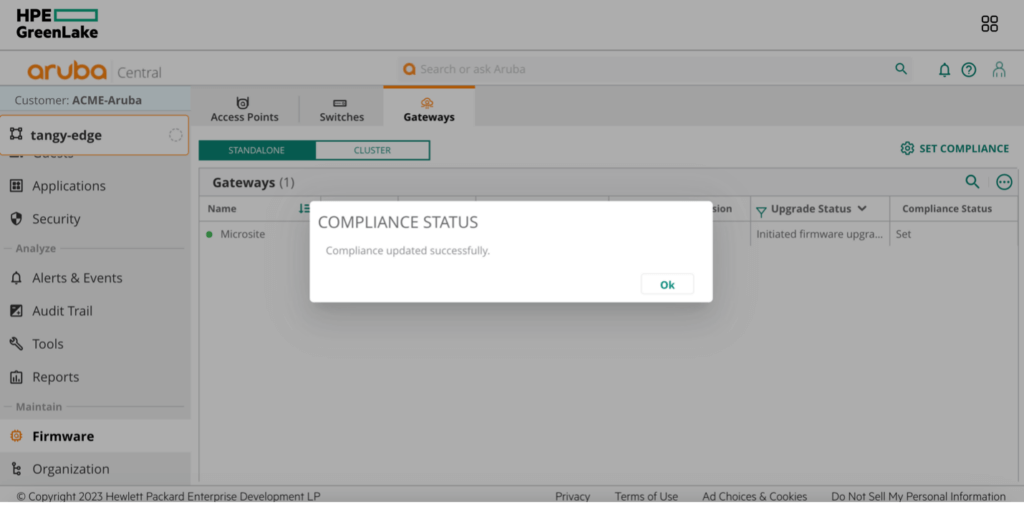
My request to upgrade the firmware on my device was also queued.
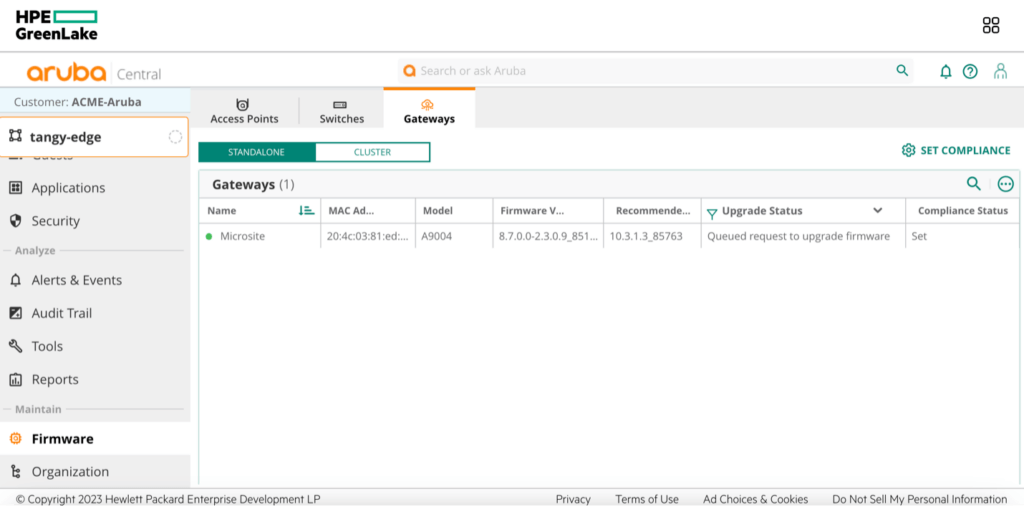
After a few moments, the request to download the assigned firmware is made, and then the upgrade status changed, reflecting the start of the upgrade process.
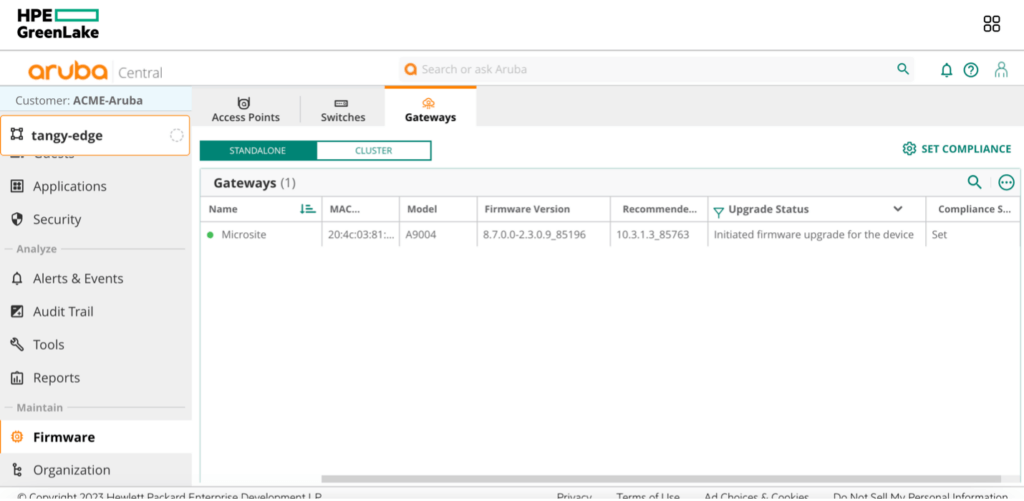
Once the upgrade was successfully installed, the Gateway was automatically rebooted and showed a red status indicator while unavailable.
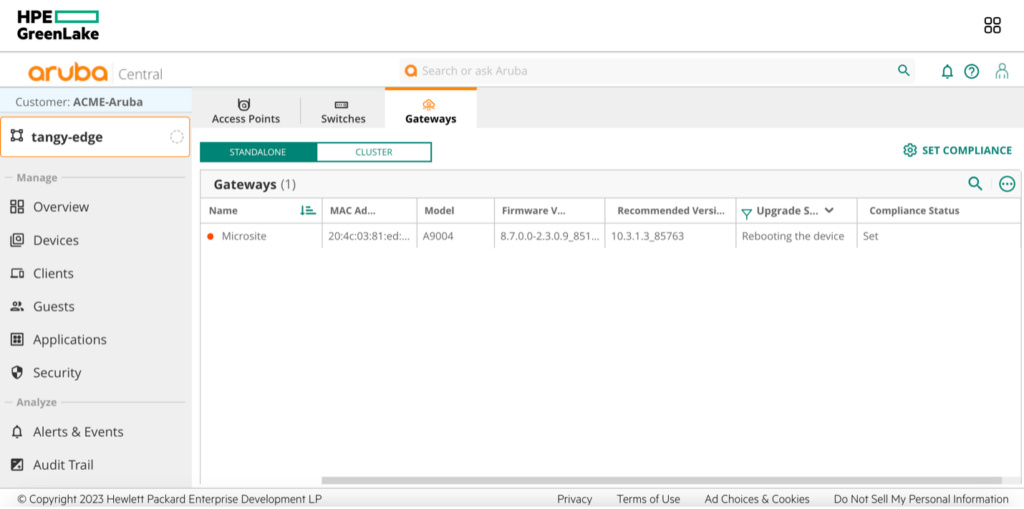
After the Gateway rebooted, the status indicator changes back to green, and the firmware was updated!
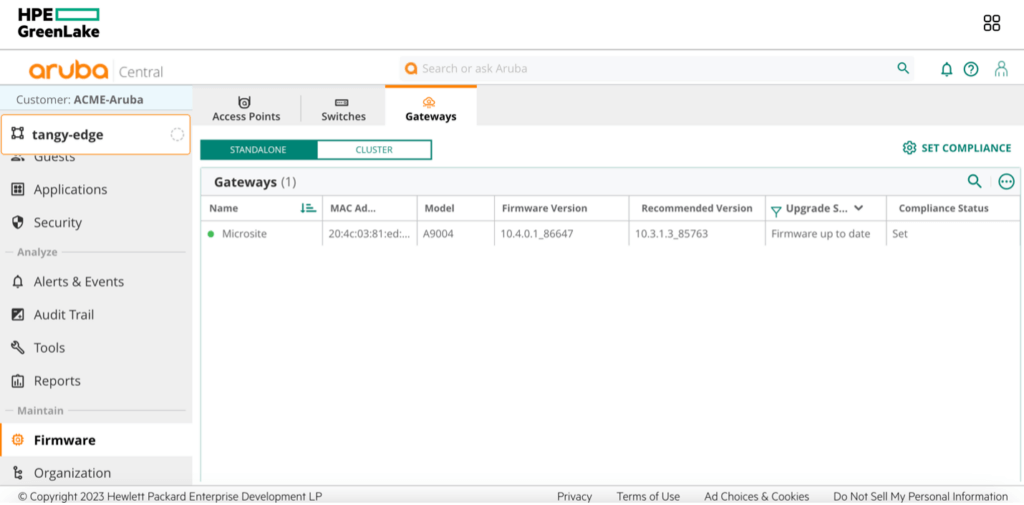
Finally, here you can check my entire audit trail. As you can see the process from start to finish took about 15 minutes. Now, if your upgrade includes a BIOS upgrade, the total time can potentially take a little longer. I’m now on AOS 10!
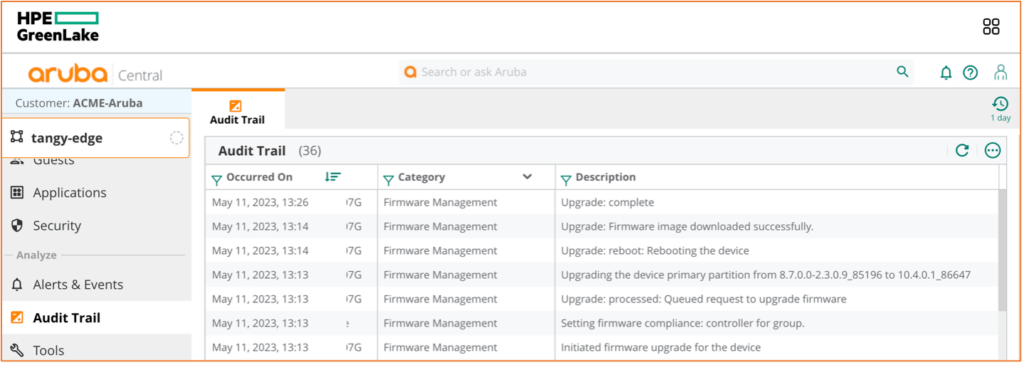
What Comes Next?
If you haven’t had the chance to look at AOS 10 or have been busy with other priorities, I highly recommend you take another look. You don’t need to upgrade your entire production cluster today – feel free to start on a smaller scale with a test site. If you need assistance with upgrading a group of hardware to AOS 10, or you have additional configuration considerations, look at the resources available below, in your Central search bar, or contact HPE Services / TAC for enhanced support.
If you are looking for further guidance as far as what’s new in Central, check out our on-demand webinar featuring Dave Logan from our CTO office.




